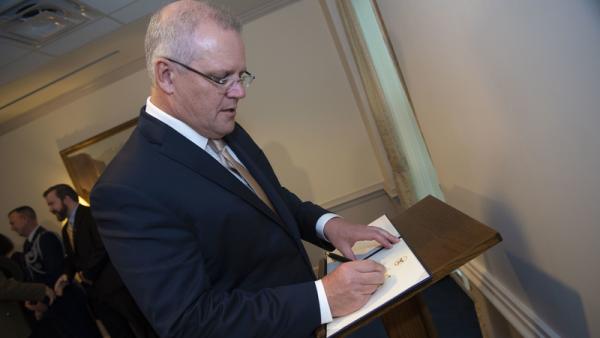U.S. Secretary of Defense / Flickr

James Laurenceson, Director, Australia-China Relations Institute, University of Technology Sydney |
This article appeared in The Australian Financial Review on August 27 2020. A Simplified Chinese translation is available.
Prime Minister Scott Morrison says that Australia must ‘speak with one voice’ when engaging with foreign governments and their related entities. All eyes are on Beijing.
This is the justification for moves by Canberra to increase its visibility and scrutiny of agreements struck by state and local governments, as well as public institutions such as universities. And, potentially, to terminate them.
One reading is that a centralisation of power is long overdue. Foreign policy and national security are Commonwealth responsibilities, so it makes sense for the federal government to be running the show.
And having greater transparency around connections with foreign governments can hardly be complained about. The more, the better.
It is also a reality that Australia’s external environment can shift. China in 2020 under President Xi Jinping is more troubling for Australia’s national interests than it was back in 2010 under Hu Jintao.
For that reason, having an ability to revisit past deals is smart policy.
There’s even a positive reading available to those wanting to preserve strong China ties. In taking an approach that emphasises transparency and risk management, Morrison is fending off calls for a more aggressive decoupling that are disconnected from facts.
It’s no secret that a number of hairy-chested backbenchers and media commentators would prefer Canberra manage China relations by issuing edicts and bans. So too would the United States, which is fixated on China as an economic, strategic and ideological threat.
The Morrison government has been deliberate in distancing itself from such extreme positions, including at the AUSMIN meetings in Washington last month. Instead, it has wisely kept options open with both of Australia’s ‘great and powerful friends’.
In this reading Canberra is sending Beijing a message: we are giving ourselves the ability to take decisions you probably wouldn’t like. But we’ll only take them if you push us.
There is, however, a third reading that points to overreach.
Sure, agreements such the one between Victoria and China on the Belt and Road Initiative (BRI) have an element that involves foreign policy.
But they are also about supporting infrastructure development. And about attempting to smooth access to the only major global market expected to expand this year. And about promoting cultural exchange.
In other words, providing local jobs and building vibrant communities. These are very much the responsibilities of state and local governments.
The worry is that the pendulum may swing wildly from one side of the spectrum, which sees only the opportunities from engagement with China, to the other side that sees only risks.
There is precisely zero evidence that in signing a non-legally binding memorandum of understanding Victoria has somehow undermined Australian foreign policy and Canberra’s capacity to act. The consistent and firm approach the Morrison government has taken to managing China relations makes that clear.
There are also benefits from experimentation and contestability. Might federal government ministers and bureaucrats learn something about how China seeks to use the BRI by talking to their Victorian counterparts and taking stock of their experiences?
Is the security and strategic blob in Canberra to be the sole source of authoritative advice, sidelining businesses, universities and community organisations around the country? Is it possible that with Victoria having these links, the bilateral relationship has received some political ballast during an otherwise turbulent period?
Transparency only for others?
And let’s be frank: there’s more than a little hypocrisy involved, too. While demanding greater transparency from sub-national actors, the federal government has refused to release the text of its own agreement with China on co-operation with Belt and Road projects in third-party markets, struck in September 2017.
The Australian government also, reasonably, pushes for greater transparency from China on the BRI projects it supports, particularly those in our Pacific neighbourhood. Yet in November last year it refused to make public the details of a $442 million loan extended to Papua New Guinea. Export Finance Australia said that terms for such deals were negotiated on a case-by-case basis, and were commercially sensitive.
Good luck if Victoria or China were to try that one on.
In the end, if the Morrison government has its way and the legislation proceeds, much will depend on whether Canberra is able to exercise balance and restraint in the face of what will no doubt be well-connected and louder calls to exercise its authority.
Treasurer Josh Frydenberg’s recent decision to stop a Chinese company acquiring a dairy and drinks manufacturer from a Japanese owner, without explaining why it was deemed contrary to the national interest, doesn’t inspire confidence.
Meanwhile, yesterday China’s deputy head of mission offered a mostly conciliatory speech at the National Press Club in Canberra. Such olive branches ought to be seized.
Author
Professor James Laurenceson is Director of the Australia-China Relations Institute at the University of Technology Sydney.


